#engine oil distributor
Explore tagged Tumblr posts
Text
Shell lubricants distributors in Bangalore
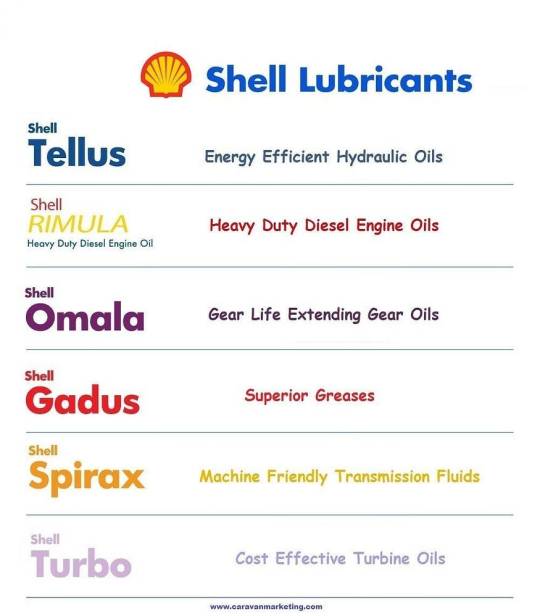
Shell lubricants distributors have a deep understanding of the market and provide expert advice on product selection, usage, and maintenance. They also offer a wide range of value-added services such as training, technical support, and product delivery.
By partnering with Shell lubricants distributors, businesses can benefit from the expertise of a trusted and reliable partner who can help them optimize their operations and reduce costs. Shell lubricants distributors also uphold Shell’s commitment to sustainability, ensuring that the products they deliver are safe, reliable, and environmentally responsible. Their dedication to customer service and quality makes them an integral part of the Shell lubricants supply chain.
Contact Us
Address — 106 Road number 4 2nd phase, Jigani Industrial Area Anekal Taluk Bangalore, Karnataka 562106
Email — [email protected]
Phone — 9980005255, 080–42297210
Website — https://www.caravanmarketing.com
Related Searches
shell lubricants distributors
shell oil distributor bangalore
industrial oils
oil and grease suppliers
industrial oil distributors
#shell bangalore#shell#engine oil distributor#lubricant oil distributor#grease distributor#oil and grease suppliers#shell high temp grease#Oil Distributors#industrial oils#3m double tape#abrasive manufacturers#adhesive uses#Gear Oils#Hydraulic Oils#bearing oil lubrication#Quaker houghton india#Threading Tools#WIDIA Cutting Tools#shell lubricants distributors#Target Keywords#shell oil distributors in bangalore#Shell engine oil distributor#widia tools#grease suppliers#lubricant oil suppliers#bangalore industrial oils#industrial oil distributors
0 notes
Text
Choosing The Right Engine Oil Distributor: Key Factors To Consider
When it comes to maintaining the performance and longevity of your machinery and vehicles, selecting the right engine oil distributor is crucial. A reliable distributor not only ensures the availability of high-quality lubricants but also plays a vital role in providing technical expertise and excellent customer service. Here are some key factors to consider when choosing an engine oil distributor:
Quality Products:
The quality of lubricants provided by the distributor is paramount. Look for a distributor that partners with reputable oil manufacturers known for producing premium-grade engine oils. Ensure that the distributor offers a wide range of lubricants suitable for various applications and industries. Quality products enhance the efficiency of your machinery, reduce friction, and protect against wear and tear.
Technical Expertise:
An ideal engine oil distributor should have a team of knowledgeable professionals who can offer expert advice and technical support. They should be able to guide you in selecting the right lubricant for your specific needs, considering factors such as operating conditions, equipment requirements, and industry standards. A distributor with technical expertise can help optimize your machinery's performance and prevent potential issues.
Prompt Delivery and Inventory Management:
Timely delivery of lubricants is crucial to avoid downtime and ensure uninterrupted operations. Choose a distributor with an efficient logistics system that can provide prompt and reliable delivery services. Additionally, consider a distributor who can manage your inventory efficiently by offering just-in-time deliveries and providing real-time tracking of orders.
Customer Service and Support:
A reliable engine oil distributor should prioritize excellent customer service. They should be responsive to your inquiries, provide clear communication, and offer after-sales support. Look for a distributor who values long-term relationships and is committed to addressing any concerns or issues promptly. Exceptional customer service ensures a smooth and hassle-free experience throughout your partnership.
Conclusion:
Selecting the right engine oil distributor is vital for the optimal performance and longevity of your machinery. Consider factors such as the distributor's product quality, technical expertise, delivery services, and customer support when making your decision. By choosing a reputable distributor, you can ensure the availability of high-quality lubricants and benefit from their expertise to keep your equipment running smoothly.
0 notes
Text
How to Select Engine Oils for Both Hot and Cold Climates
Engine oils from the lubricant companies in UAE play a crucial role in ensuring the smooth functioning and longevity of an engine. The type of engine oil used depends on several factors, including the climate conditions in which the vehicle operates. In this article, we will discuss how to select engine oils suitable for both hot and cold climates.
Hot Climate
When it comes to hot climates, it is essential to choose an engine oil that can withstand high temperatures without breaking down or evaporating. High temperatures can cause the oil to thin out, reducing its ability to lubricate the engine’s moving parts. The following are the factors that you need to consider when selecting engine oils for hot climates:
Viscosity Grade: The first factor to consider is the viscosity grade of the oil. Viscosity is a measure of the oil’s thickness, and it affects the engine’s performance in hot temperatures. A low viscosity grade (0W-20 or 5W-30) is ideal for hot climates, as it offers better flow and lubrication during start-up, reducing engine wear. However, it is essential to ensure that the oil’s viscosity is not too low as it may cause excessive oil consumption and engine wear.
Read more:https://dufelub.com/how-to-select-engine-oils-for-both-hot-and-cold-climates/
0 notes
Text
Engine Oil and Lubricants Distributors Requirement

Here is the best automobile product business opportunity, which is offered by many brands. The best-quality engine oil distributors are searching for our listed brands, which have two-wheelers, three-wheelers, four-wheelers, trucks, and construction machinery engine oils, lubricants, and grease. They are looking for dealers and distributors all over the country. Just visit Appoint Distributors for further details.
0 notes
Text
Embark on a journey to decode the pinnacle of performance with our latest blog post, as we unravel the secrets behind ROFEIBI's Moto Racing Engine Oil. Whether you're a dedicated motorcycle racer or a passionate rider, this article is your key to understanding the unparalleled performance benefits offered by ROFEIBI's exceptional engine oil. Delve into the intricacies of ROFEIBI's Moto Racing Engine Oil and discover how it stands out in the competitive world of motorcycle racing lubricants. Our expert insights explore the unique formulation, advanced additives, and cutting-edge technology that make ROFEIBI the go-to choice for riders seeking the ultimate in engine protection and performance enhancement. Learn about the specific features that set ROFEIBI's Moto Racing Engine Oil apart, from its ability to withstand extreme temperatures to its role in minimizing friction and ensuring optimal engine efficiency. We break down the science behind ROFEIBI's commitment to delivering a high-performance oil that meets the demands of the most rigorous racing conditions.
#moto racing engine oil#best moto racing engine oil manufacturer#moto racing engine oil manufacturer#moto racing engine oil manufacturing company#moto racing engine oil distributor#top moto racing engine oil manufacturer#racing engine oil manufacturer#racing motorcycles engine oil supplier#racing motorcycles engine oil company#high performance motor racing engine lubricant#high performance motor racing engine oil#high performance engine oil for racing motorcycles#pao based motor racing engine oil company#pao based motor racing engine oil
0 notes
Text
Avail the Best Battery Replacement Services from Salama Tire

The battery is the most important and frequently disregarded component of a car. It runs the remainder of the car's electrical systems in addition to starting the engine. Batteries can be recharged, but ultimately they also lose their ability to store a charge. It could happen as a result of the climate or the length of its typical lifespan. If the battery is dead, the car needs a boost to start; if that doesn't work and you've tried jump-starting it to recharge it, the battery needs to be replaced.
If your car needs a battery replacement, you should get it from a reputed dealer such as the Salama Tire - a top Distributor of Dunlop and Evergreen Tires.
The other electrical parts of the automobile, as well as the batteries, may benefit from a replacement service of a car battery. As you are aware, the battery is a crucial component that distributes energy to the other parts; therefore, if the battery is destroyed, it may also impact the other components. Therefore, it is beneficial to replace your car battery to ensure that your vehicle operates faultlessly.
You may reduce your chances of becoming trapped in the middle of the road by acquiring car Battery replacement services. A new battery may provide your engine with power, enabling you to drive your automobile without experiencing any problems. The following are a few advantages of replacing the car battery: -
Longer Life: A new car battery will provide your vehicle a longer lifespan while maintaining its performance.
Quick Charging: You can avoid having problems with batteries regularly discharging by replacing the automobile battery. Modern batteries typically recharge more fast than previous batteries.
Less Maintenance: Replacing a car battery breathes new life into the vehicle. The car may last longer and require less maintenance as a result. You won't need to visit the mechanic as often.
Less Discharge Rate: When you replace your old batteries with high-quality ones, your car's battery will discharge at a lower rate. There is no doubt when it comes to self-discharging in the car.
More rapidly and effectively than earlier batteries, newer batteries can readily fire the plugs and cut off the power supply. The label on the external casting of the car battery can be seen, therefore it is important to know what kind of battery your automobile uses before changing it. The ability of the battery replacement to boost the automobiles is its best feature. Salama Tire is a leading tire distributor that provides branded tires, products like Shell Helix Engine Oil and various services like tire balancing, alignment services, replacement of battery etc.
0 notes
Photo

Become Engine Oil Distributors Under the Brand Name Gulf Oil Lubricants India Ltd.. For Engine Oil Distributorship Opportunity please Call us: at 08037304045
#Become Engine Oil Distributors#Engine Oil Distributors#Best Engine Oil Distributors#Top Engine Oil Distributors#Engine Oil Distributorship
0 notes
Text
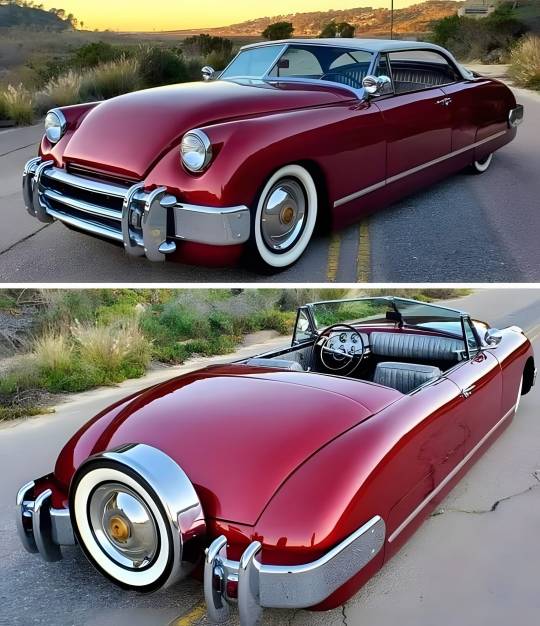
Custom 1953 Muntz Jet Convertible
This 1953 Muntz Jet convertible underwent a three-year custom build under previous ownership, and it was purchased by the seller in 2021. The car is powered by a fuel-injected 5.7-liter LT1 V8 engine paired with a four-speed automatic transmission and a Ford 9″ rear end, and it is finished in Apple Pearl with a white Carson-style removable top over gray snakeskin-style Naugahyde upholstery. Features include custom bodywork, an Art Morrison frame, power-assisted steering, four-wheel disc brakes, airbag suspension, Painless Performance wiring, and more modified and fabricated details. This custom-built Muntz is now offered with a copy of Rodder’s Journal magazine featuring a story on the build and a clean California title in the name of the seller’s business.

Custom 1953 Muntz Jet Convertible
The steel, aluminum, and fiberglass body is mounted on an Art Morrison ladder frame that was boxed and finished in semi-gloss black, and the floor was raised 3″. The exterior was repainted in a Sherwin Williams two-stage Apple Pearl mixed by the late Stan Betz. Features include a chopped Duvall-style windshield, 1950 Chevrolet headlights, dual Appleton spotlights, 1951 Ford Victoria side windows, and a white removable Carson-style top fabricated to match the height of the chopped windshield. Additional equipment includes color-matched rear fender skirts and chrome bumpers. Wear from fitting the top is noted on the rear deck.
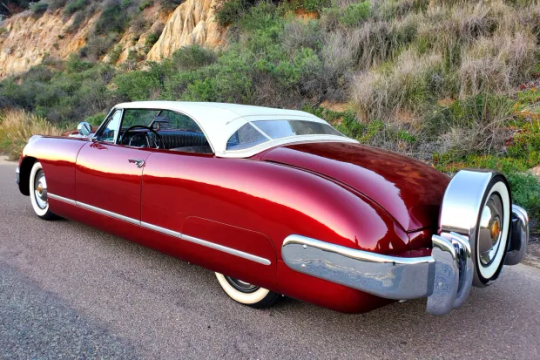
Custom 1953 Muntz Jet Convertible
Steel wheels sourced from a 1976 Dodge measure 15″ and are mounted with Cadillac Sombrero-style covers and whitewall tires. A matching spare fitted with a BFGoodrich Silvertown tire is mounted within a rear-mounted Continental-style chrome carrier. A Mustang II front end accommodates power rack-and-pinion steering , and the car rides on an electronically-adjustable Air Ride Technologies airbag suspension system along with 2” lowered front spindles, Strange Engineering tube shocks, a rear Panhard bar, and front and rear sway bars. The seller reports that the front control arm bushings were recently replaced.

Custom 1953 Muntz Jet Convertible

Custom 1953 Muntz Jet Convertible
Braking is handled by GM G-body-sourced calipers matched with Ford Granada discs up front and Ford SVO-specification calipers and discs at the rear.

Custom 1953 Muntz Jet Convertible
The cabin was customized by Jim’s Auto Trim of San Diego, California, and features Glide bucket seats and a rear bench trimmed in gray snakeskin-style Naugahyde upholstery, along with matching treatments for the dash trim, headliner, and door panels. Additional equipment includes a 1952 Lincoln steering wheel mounted to a shortened Lincoln steering column, gray cut-pile carpet, and a Pioneer stereo housed within a custom center cubby.
The engine-turned “Hollywood” instrument cluster houses Stewart Warner gauges consisting of an 8k-rpm tachometer, a 160-mph speedometer, and auxiliary readings for fuel level, battery charge, oil pressure, and water temperature. The five-digit odometer displays 25k miles, though total chassis mileage is unknown. A Lokar pedal assembly was fitted during the build.
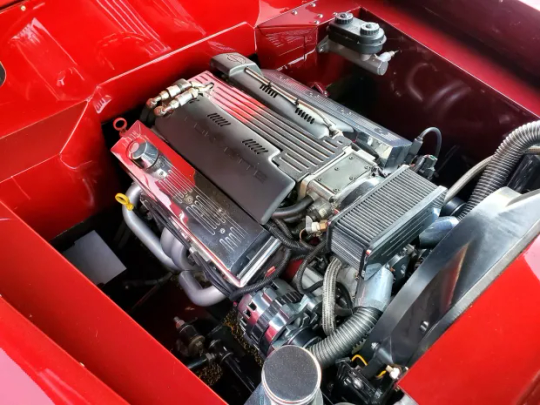
Custom 1953 Muntz Jet Convertible
The Corvette-sourced 5.7-liter LT1 V8 features a polished fuel intake manifold along with billet aluminum valve covers, and additional features include an Opti-Spark distributor, a Griffin aluminum radiator, and a wiring loom sourced from Painless Performance Wiring. A set of long-tube headers are connected to a 2.5″ exhaust system equipped with dual Dynaflow mufflers. The seller reports that the oil was recently changed.
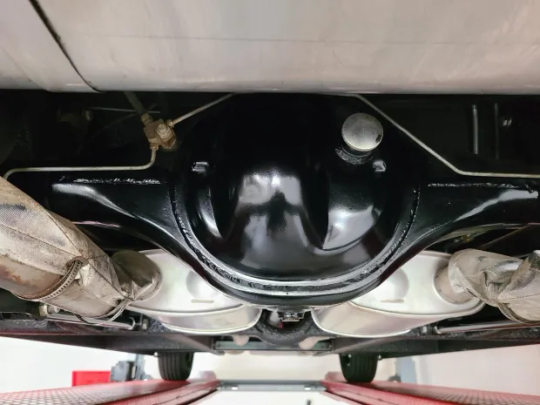
Custom 1953 Muntz Jet Convertible
Power is routed to the rear wheels via a four-speed 4L60E automatic transmission and a Ford 9″ rear end with with 3.55:1 gears and Strange Engineering 31-spline axles. Additional photos of the underside, drivetrain, and suspension components are presented in the gallery below.
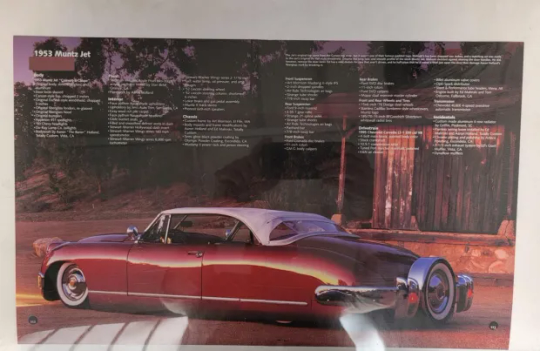
Custom 1953 Muntz Jet Convertible
The car was featured in issue #36 of Rodders Journal magazine
#Custom 1953 Muntz Jet Convertible#Custom 1953 Muntz Jet#Muntz Jet Convertible#Custom Muntz Jet Convertible#Muntz Jet#Convertible#car#cars#muscle car#american muscle
110 notes
·
View notes
Photo

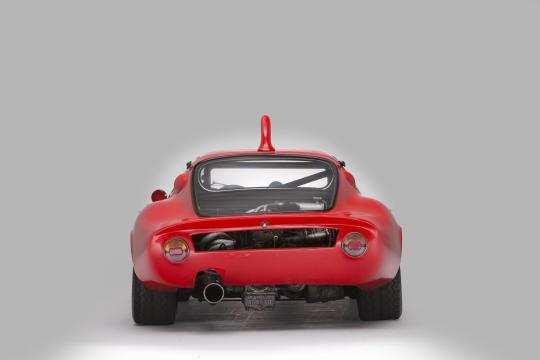


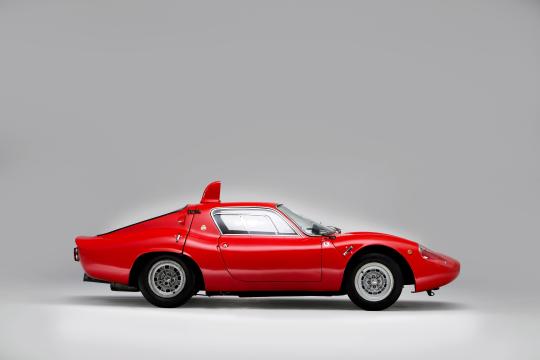


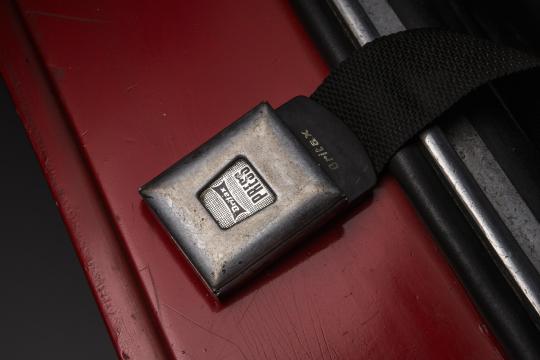
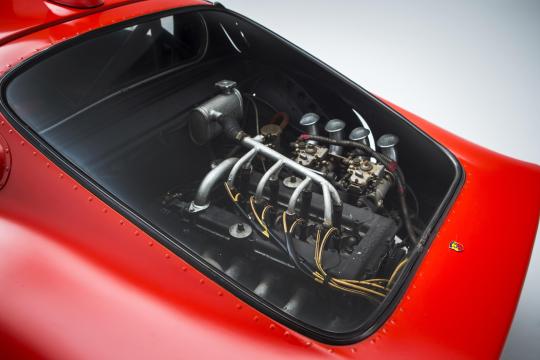
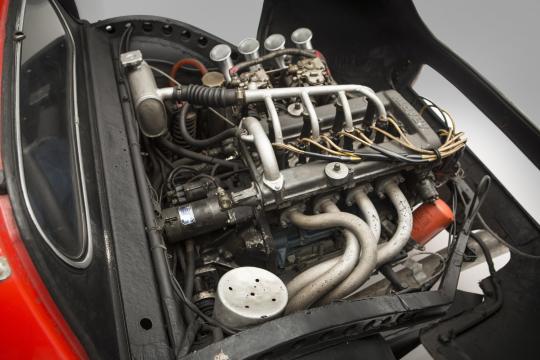
Abarth 1300OT Periscopica Coupé
In 1958, the American Chrysler Corporation pursued an entry into the European motor manufacturing market by buying 15 per cent of the French Simca company's stock from Ford. At that time, however, the dominant shareholder remained Fiat of Turin, and their influence remained distinctively apparent in the engineering and design of Simca cars for several years into the early 1960s. However, in 1963 Chrysler increased its Simca stake to a controlling 64 per cent by purchasing stock from Fiat, subsequently extending that holding to 77 per cent.
Chrysler had no interest in any continuation of the previously successful Simca Abarth and Abarth Simca high-performance car collaboration, which came to a juddering halt. In Turin Carlo Abarth found himself left more or less high and dry, but the supply of basically Simca 1000 chassis floor pans, upon which the sleek and superfast Abarth Simca 1600s and 2000s had been based, left quite a number in stock, as yet unused. The popular legend is that it was upon these unused Simca platforms that Abarth then founded his 1300cc class Gran Turismo design for 1965 – the OT 1300. Abarth's technical team under Mario Colucci had developed a boxed pressed-steel chassis structure on the modified Simca 1000 floor pan to which allindependent suspension was attached with componentry drawn from the Fiat 850 shelves. The Abarth OT 1300 then emerged, to race for the first time as a prototype in the September, 1965, Nurburgring 500-Kilometre classic.
Driver Klaus Steinmetz hammered the new Coupé home to a fine third-place finish overall and the OT 1300 was up and running into the record books, becoming one of the most successful – and also one of the most distinctive – models that Abarth & C ever produced. The OT 1300's rear-mounted all-Abarth engine was overhung – in best Carlo Abarth-approved style. It was a 4-cylinder unit with twin overhead camshaft cylinder head, using a block with cylinder bore and stroke dimensions of 86mm x 55.5mm to displace 1289cc.
With two valves per cylinder and a 10.5:1 compression ratio, the engine breathed through two twin-choke Weber 45DCOE9 carburettors. Ignition was by two plugs per cylinder, fired by single distributor. Dry-sump lubrication was adopted and the power unit produced a reliable 147bhp at 8,800rpm. This lusty engine, perfected by Abarth's power-unit specialist Luciano Fochi with five main-bearing crankshaft, drove via a five-speed and reverse Abarth transaxle.
Wheelbase length of the OT 1300 was nominally 2015mm, front track 1296mm and rear track 1340mm. It featured moulded glassfibre clamshell-style opening front and rear body sections moulded by Sibona & Basano in Turin, and this pert-nosed Coupé became a familiar sight dominating its class for three consecutive years. Production of the OT 1300 began on May 15 1966 and ended on March 30, 1966, by which time the minimum production number of 50 required by the FIA for homologation as a Gran Turismo model had (allegedly) been achieved. The most distinctive single characteristic of the OT 1300 Coupé, apart from its huge International success within its class, was its adoption of the Periscopica air-cooling intake on the rear of the cabin roof. Casual onlookers would assume that the periscopelike intake fed intake air into the rear-mounted engine, but this is absolutely not the case. Instead, the water and oil-cooling pipe runs through the cockpit area heated-up the cabin to what was generally considered to be an unacceptable level for endurance racing, and the periscope intake merely blasted cold air down into the cabin to cool the driver himself...
From the OT 1300 Mario Colucci developed the OT 2000 Coupé using the 1946cc 4-cylinder power unit perfected by his colleague Luciano Fochi and with some 215bhp at 7,600rpm that largerengined model was capable of exceeding 165mph in a straight line. In fact all these Abarths with their sleek aerodynamic bodies and light weight really were exceedingly rapid by the standards of the time and within their respective capacity classes.
100 notes
·
View notes
Text

2024-12-24: Vermont (Hex 24)
The road meanders and weaves over rolling hills covered in forests. Beech, birch, and maple trees cling tightly to the cool ground; the forests conceal a variety of wildlife.
Notable Feature: The Lotus Eater Forest (Resource)
Consisting of several dozen acres of boreal forest on the edge of a lake, the Lotus Eater Forest is named after the lotophages in Homer’s Odyssey. Several of the trees here produce a chemical aura that is mostly imperceptible to humans but makes mammalian Beasts docile and unafraid of people. For every 4 hours a person waits in the forest near one of these trees, an animal native to the area wanders into the influence of the tree. Roll 1d12 and consult the table below to see what animal appears.
Animal Caught By The Trees (1d12)
Coyote (Use Hyena statblock)
Fox, Red or Gray (Use Jackal statblock)
Bobcat (Use Panther statblock)
Ermine, Weasel, or Mink (use Weasel statblock)
Mountain Lion (Use Panther statblock)
Otter (Use Giant Weasel statblock with a swim speed of 40)
Fisher or American Marten (Use Badger statblock)
Skunk (Use Troglodyte statblock with 4 HP and no chameleon skin)
Raccoon (Use Giant Rat statblock)
Black Bear
Deer
Moose/Elk (Use Elk statblock)
Animals found in this way can be easily captured in this stupefied state. Some people in other places would pay good money to have some of these creatures as exotic pets. The animal recovers from the effects of the trees after being out of their influence for 1d4 hours. Sticks and small branches taken from these trees can be placed near creatures to prolong the effects (useful for transporting creatures!), but will lose their potency after 12 hours.
Service Station: Unity Heating Distributors
A small office building and a gravel parking lot is surrounded by industrial-scale storage tanks that hold propane and heating oil. Unity Heating Distributors is not a traditional service station because its purpose is to supply rural Vermont households with the supplies they need to keep warm. However, gas and diesel is often hard to find out here, so the company installed a few gasoline and diesel tanks to top off their service vehicles. Locals and the occasional travelers passing through the area are welcome to fill up here, but it costs about twice as much as a regular gas station. Minor repairs and light engine work can be performed by the garage technicians on site, but they don’t usually keep the parts in stock for cars and light trucks and it’ll be a long wait to get them delivered out here. Those in search of food will need to settle for handfuls of candy from gumball style machines or a soda from a vending machine that hasn’t been refilled in a while.
Items From Other Hexes
Heloise Carter is a reporter for the Freedom Bell newspaper who specializes undercover investigative journalism. She is the contact of Will Karlsson (Hex 9) and is willing to help him cover the story, but she is in the middle of investigating a group of disappearances over the past few years that the police have attributed to hippie cults. Before she can help Will, she needs to finish her investigation on this story and the evidence is beginning to point toward corrupt cops inventing a story about hippie cults to hide murders of local counterculture figures who were openly critical of police actions.
3 notes
·
View notes
Text
Industrial lubricant distributors in INDIA
There are several factors to consider when selecting the right industrial lubricant. A manufacturer’s recommendation is a great starting point, but it doesn’t have to be the only option. Most manuals are written for ideal conditions, but these guidelines don’t address the real environment in which the equipment is being used. It’s best to use an industrial lubricant that meets the specific demands of your operation. There are new advancements in lubrication that could prove to be more reliable or extend equipment life further if you are willing to do the research and understand the basics.
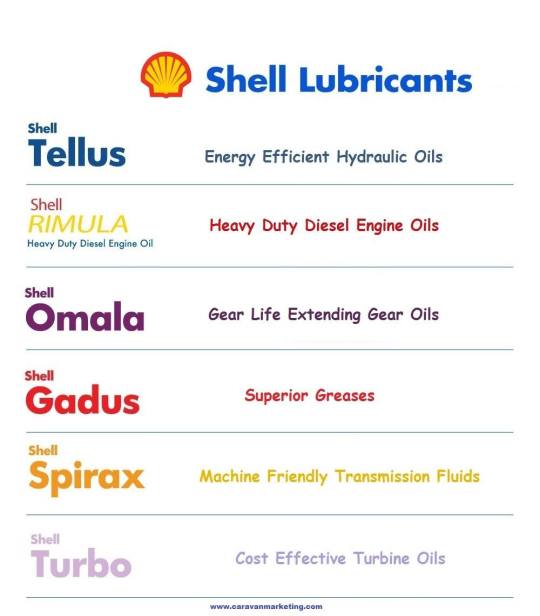
We recommend customers understand the “4 C’s to Lubrication” :
Correct Technology
Correct Quantity
Correct Frequency
Correct Procedures
Correct Lubrication Technology
Temperature determines lubricant base oil type
Speed determines viscosity required (at operating temperature)
Load, vibration, and moisture determine the additive package
There are three (3) classifications of a lubricant:
Fluid (Liquid)
Semi-Solid (Grease)
Solids (Dry)
Correct Lubrication Quantity and Frequency It’s important to understand the damage that over or under greasing can cause your equipment. Manually re-greasing too often and/or with the incorrect amount, or automatically lubricating with the incorrect lubricant can cause harm. Whether you choose an automated system or manual, the goal should be to provide the right type of lubricant, in the right amount, at the right time. This approach allows for a constant level of protection.
Frequent bearing failure is a prime example of damage caused by over or under greasing. According to the American Bearing Manufacturers Association (ABMA), improper or insufficient lubrication is the cause of 64% of bearing failures. It is important to understand the various parameters surrounding the operation of any given bearing to properly select re-lubrication intervals. Over greasing will lead to increased operating temperatures, resulting in energy losses and eventual bearing failure. Similarly, using too little grease will not allow the grease to properly carry the load applied to it, which will also result in bearing failure.
Correct Lubrication Procedures Once the correct lubrication has been determined, procedures should be put in place to maintain a lubrication program. This will ensure that the proper lubrication procedures for each piece of equipment throughout the plant. These factors should include :
Reviewing storage and handling conditions
Maintaining records of the correct lubricant type for each application
Determining the proper amount of lubrication per day and frequency of re-lubrication
Content taken From – https://blog.chesterton.com/lubrication-maintenance/best-practices-industrial-lubrication/
#shell bangalore#shell#engine oil distributor#lubricant oil distributor#grease distributor#oil and grease suppliers#shell high temp grease#Oil Distributors#industrial oils#3m double tape#abrasive manufacturers#adhesive uses#Gear Oils#Hydraulic Oils#bearing oil lubrication#Quaker houghton india#Threading Tools#WIDIA Cutting Tools#industrial lubricant distributors#Target Keywords#shell oil distributors in bangalore#Shell engine oil distributor#widia tools#grease suppliers#lubricant oil suppliers#bangalore industrial oils#industrial oil distributors
0 notes
Text
Beauty Brands USA: Revolutionizing Skincare with Sokörpe’s Compact Intelligent Skincare & Body Care Machine
The beauty and wellness industry is constantly evolving, with new technologies and products emerging to meet the ever-growing demand for advanced skincare and body care solutions. Among the frontrunners in this industry, Beauty Brands USA stands out as a leader in providing innovative, high-quality equipment to aesthetic professionals. As the exclusive distributor of Sokörpe’s Compact Intelligent Skincare & Body Care Machine in the United States, Beauty Brands USA offers a transformative tool that promises to elevate the standards of skincare and body care services. In this comprehensive article, we explore the features, benefits, and impact of this revolutionary machine, along with insights into why Beauty Brands USA is the preferred partner for skincare professionals.
Key Features and Technologies
Seven Treatment Heads: Each head is engineered to perform specific functions, enabling a personalized treatment experience for clients. Whether it’s anti-aging, acne treatment, or body contouring, the machine’s versatility is a major asset.
61 Treatment Programs: The extensive selection of programs allows practitioners to offer everything from basic facials to advanced treatments like Nano-Needle Mesotherapy and Endermomassage, ensuring comprehensive care for clients.
Nano-Needle Mesotherapy: This advanced technology delivers active ingredients deep into the skin, promoting collagen production and skin rejuvenation. It’s an effective treatment for reducing wrinkles, fine lines, and skin sagging.
Endermomassage: Available in both small and large sizes, these tools effectively treat cellulite, stimulate collagen production, and enhance skin firmness. Given the lucrative cellulite reduction market, which is expected to grow significantly, this feature offers substantial revenue potential.
Oxybrasion: This gentle yet effective exfoliation method uses oxygen to remove dead skin cells and improve circulation, leaving the skin refreshed and radiant.
Full Spectrum LED Therapy: The machine includes the full range of LED lights, each offering specific benefits:
Red Light: Stimulates collagen production and reduces inflammation.
Blue Light: Targets acne-causing bacteria and reduces oil production.
Green Light: Evens out skin tone and reduces pigmentation.
Yellow Light: Improves circulation and reduces redness.
Purple, Orange, and White Lights: Each providing unique therapeutic benefits, from healing to skin revitalization.
The Beauty Brands USA Advantage
Exclusive Distribution and Quality Assurance
Beauty Brands USA prides itself on being the exclusive distributor of Sokörpe’s machine in the United States. This exclusivity ensures that practitioners are receiving a genuine, high-quality product, backed by the company’s rigorous quality control standards.
Comprehensive Support and Training
To maximize the benefits of Sokörpe’s machine, Beauty Brands USA provides extensive training and support. This includes initial setup guidance, detailed instructions on utilizing the machine’s various features, and ongoing support to help practitioners refine their techniques.
Marketing and Business Development Support
Understanding that successful implementation goes beyond just having the right equipment, Beauty Brands USA offers marketing and business development support. This includes providing promotional materials, training on effective marketing strategies, and tips for attracting new clients.

Financial Viability and Market Impact
Cost-Effective Investment
Sokörpe’s machine is competitively priced at $5,795.00 plus tax, making it an affordable option compared to other high-end devices. For instance, comparable machines for Endermomassage and Hydrafacial treatments can cost between $30,000 and $50,000, making Sokörpe’s machine a cost-effective investment for aesthetic professionals.
Revenue Generation Potential
The machine’s versatility allows practitioners to offer a wide range of treatments, each with significant earning potential. For example, Nano-Needle Mesotherapy sessions can cost between $250 and $600 each, with clients typically requiring multiple sessions. This can quickly lead to substantial revenue growth, with some practitioners reporting monthly earnings of up to $50,000.
Clinical Efficacy and Safety
Proven Results
Clinical studies have demonstrated the effectiveness of the technologies used in Sokörpe’s machine. For instance, LED therapy has been shown to reduce acne, stimulate collagen production, and improve skin elasticity. Similarly, Nano-Needle Mesotherapy and Endermomassage have proven effective in skin rejuvenation and cellulite reduction.
Safety Profile
Safety is a paramount concern in aesthetic treatments. Sokörpe’s machine is designed with safety in mind, featuring settings and protocols that ensure safe operation. This makes it suitable for a wide range of clients, including those with sensitive skin.
Real-World Success Stories
Case Studies and Testimonials
Numerous skincare professionals across the United States have integrated Sokörpe’s machine into their practices, experiencing significant business growth and client satisfaction. Testimonials often highlight the machine’s versatility, ease of use, and the impressive results it delivers.
Market Expansion and Client Retention
With the ability to offer innovative treatments that are not widely available, practitioners can attract new clients and retain existing ones. The machine’s comprehensive treatment options also enable practitioners to provide personalized care, further enhancing client loyalty.
The Science Behind the Treatments
LED Therapy
LED therapy involves the use of different wavelengths of light to penetrate the skin at varying depths. This triggers biological processes that rejuvenate and repair the skin. Each wavelength, represented by a different color, offers specific benefits:
Red Light (630-700 nm): Promotes collagen production and accelerates healing.
Blue Light (405-420 nm): Kills acne-causing bacteria.
Green Light (515-525 nm): Reduces pigmentation and evens skin tone.
Yellow Light (570-590 nm): Improves circulation and reduces redness.
Purple, Orange, and White Lights: Offer additional benefits like healing and revitalization.

Nano-Needle Mesotherapy
This treatment involves the use of nano-sized needles to deliver active ingredients directly into the dermis. It is effective in stimulating collagen and elastin production, which helps reduce the appearance of wrinkles and improve skin texture.

Endermomassage and Oxybrasion
Endermomassage uses mechanical stimulation to reduce cellulite and improve skin firmness. Oxybrasion, on the other hand, is a non-invasive exfoliation method that uses oxygen to cleanse and rejuvenate the skin.
Sokörpe’s Compact Intelligent Skincare & Body Care Machine, distributed exclusively by Beauty Brands USA, is a revolutionary device that offers unparalleled versatility and effectiveness. With its seven customizable treatment heads and 61 unique programs, it provides a comprehensive solution for skincare and body care needs. Beauty Brands USA’s commitment to quality, innovation, and support ensures that practitioners can maximize the potential of this incredible machine, transforming their businesses and providing exceptional results for their clients.
If you’re a skincare professional looking to elevate your practice, Sokörpe’s Compact Intelligent Skincare & Body Care Machine is the investment you need. With its affordability, extensive support, and proven results, it’s the key to unlocking new levels of success and client satisfaction. Don’t miss out on the opportunity to offer the latest and most effective treatments—partner with Beauty Brands USA and make Sokörpe’s machine a part of your practice today.

#skincare#skincare tips#skin care#beauty tips#glowing skin#natural#organic#radiantglow#radiantskin#glowing aesthetic#beautyproducts#beauty#Skincare Machine#Spa Equipment#skin treatment#body care#massage equipment#Endermomassage#Diamond Micro-Dermabrasion#Oxygen Infusion#Oxybrasion#Kinetic Massage#Nano-Needle Mesotherapy#Beauty Brands USA
3 notes
·
View notes
Text
Motor Oil In UAE

Are you looking for high-quality motor oil products for your automotive business or industrial needs in UAE? TradersFind is your ultimate platform to connect with top-notch motor oil suppliers and manufacturers in UAE.
Trusted by buyers and sellers alike, TradersFind offers a wide range of motor oil products that meet the highest standards of quality and performance. Whether you need engine oils, lubricants, or hydraulic fluids, you can find them all on our platform.
Connect with us on WhatsApp at +971 56 977 3623 to discuss your motor oil requirements and find the perfect supplier for your business.
Visit TradersFind today and explore our comprehensive directory of motor oil suppliers in UAE. Experience the convenience of sourcing premium motor oils from trusted manufacturers and distributors, all in one platform.
Visit - https://www.tradersfind.com/category/motor-oil
#MotorOil#Automotive#Industrial#Lubricants#EngineOils#HydraulicFluids#TradersFind#B2B#UAE#Dubai#AbuDhabi#Sharjah#Ajman#RasAlKhaimah
5 notes
·
View notes
Text
The Impact of Oil Change: What you Need to Know
It is very important to change your oil regularly. This is the most important routine of car maintenance. Changing your ...
Read more:https://www.tumblr.com/
0 notes
Text
Rapid Plus Engine Oil Distributorship Opportunity

Here is the distribution opportunity offered by Rapid Plus. We are 12 years old in this sector and offer engine oil distributorship through a distribution channel named Appoint Distributors. We deal mainly in automotive lubricants and engine oils and are looking for dealers and distributors for growth in the market.
0 notes